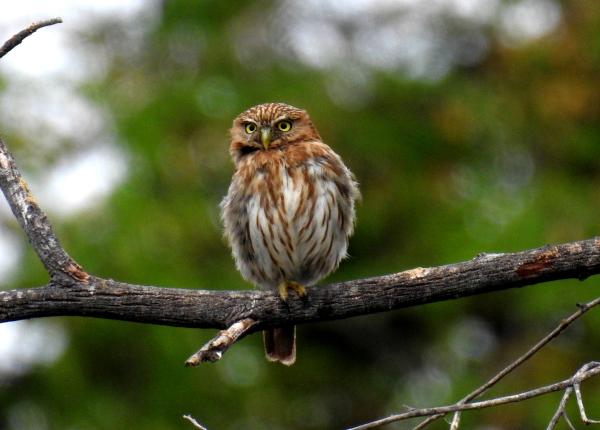Did You Know?
- Until recently, the Peruvian Pygmy-owl was considered to be the same species as the Ferruginous Pygmy-owl. However, the Peruvian Pygmy-owl has a distinctive call that easily distinguishes it from other pygmy-owls.
How The Peregrine Fund is Helping
Though The Peregrine Fund doesn't work directly with Peruvian Pygmy-owls, our efforts in scientific research, habitat conservation, education, and community development help conserve birds of prey around the world. We also supply literature to researchers from our avian research library, which helps scientists around the world gather and share important information on raptor conservation. We also run the Global Raptor Impact Network which gives raptor researchers tools to more efficiently conduct their own studies while contributing to a global program. GRIN also provides citizen scientists a way to participate in raptor science and conservation.
Where They Live
Though, based on its name, you might think that the Peruvian Pygmy-owl lives only in Peru, this owl is found in a few countries within South America. It is found in portions of the Andes from southwestern Ecuador into Peru and northern Chile. It makes its home in a few different types of habitats including deciduous and riparian forests, dry lowland scrub areas and montane scrub. It can also be found in agricultural fields, gardens and even in open areas within urban areas.
What They Do
Not much is known about the Peruvian Pygmy-owl's behavior. It can be active during the day. It is usually observed hanging out by itself or in pairs.
Why They Need our Help
The Peruvian Pygmy-owl is categorized as a species of Least Concern. The good news is that this species is found in areas around human habitation, so it doesn't appear to be disturbed by human presence and it is adapted to altered habitats.
What They Eat
Unfortunately, very little information exists about this little owl. We do know that it prey upon small invertebrates such as caterpillars, moths, cockroaches, and beetle larvae. It also is known to prey upon frogs and small birds. Other than this, very little else is known.
Nests, Eggs, and Young
Just like very little is known about this owl's diet, almost nothing is known about their nesting habits. It is likely that its breeding biology is similar to that of the Ferruginous Pygmy-owl. If that's the case, it most likely nests tree cavities or perhaps in old nests built by other bird species. We still don't know how many eggs they lay, if both adults incubate the eggs, how old the owlets are when they leave the nest, or anything else about this species' nests, eggs, or young.
Peruvian Pygmy-owl and the World Center for Birds of Prey
The World Center for Birds of Prey offers fun ways to learn about birds of prey. Interactive activities, tours, interesting videos and a children's room with activities from coloring sheets to quizzes to costumes. Owls are included among the ambassador birds at the visitor center, providing visitors with a wonderful opportunity to see owls up close and learn about the wonderful and interesting adaptations they have in order to survive in their respective habitats. There is also a touch table with owl feathers and other natural objects available for exploration.
References:
Schulenberg, T. S. and H. Batcheller (2020). Peruvian Pygmy-Owl (Glaucidium peruanum), version 1.0. In Birds of the World (T. S. Schulenberg, Editor). Cornell Lab of Ornithology, Ithaca, NY, USA. https://doi.org/10.2173/bow.pepowl1.01










